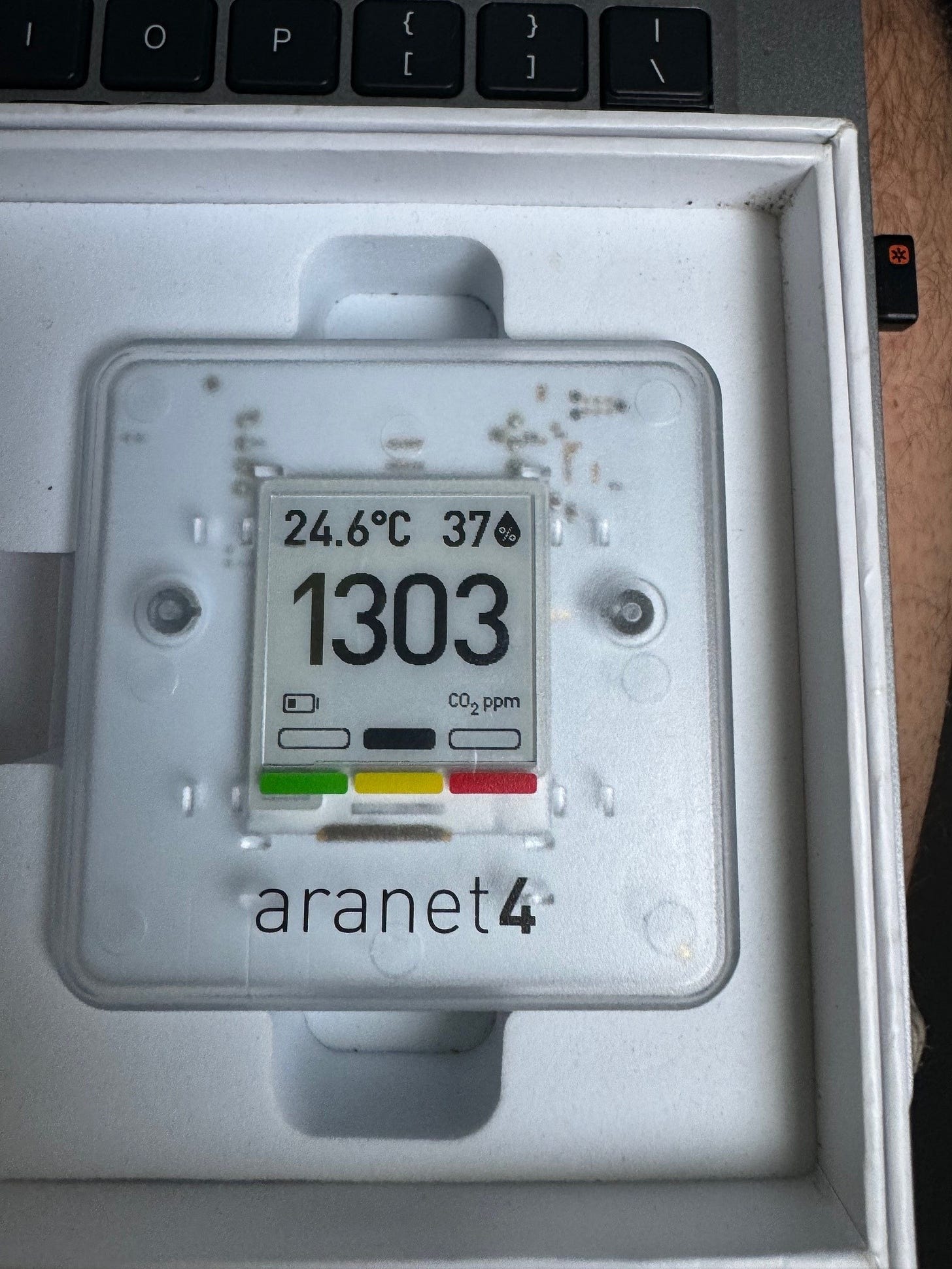Clean indoor air improves performance
May 15, 2024
Source: Allen, JG et al J Exposure Sci and Env Epi, October, 2017 LINK (I used plotdigitizer to estimate the points on graphics in the journal article.)
I listened to a talk by Joe Allen of the Harvard Chan School of Public Health last month. Joe has promoted improving building ventilation since long before the COVID pandemic and was an early advocate of increasing air exchanges and filtration to decrease transmission of COVID (and influenza or other respiratory diseases). He pointed to his earlier research demonstrating that pilots in flight simulators performed much more poorly when exposed to higher levels of carbon dioxide. Lower carbon dioxide levels means that there are more air exchanges, since building or airplane occupants exhale carbon dioxide. The graph above shows that less ventilation led to more pilots failing simulator tests, especially for difficult maneuvers like circling to land when some monitors malfunction.
Here’s a link to an article that Allen authored last fall in Harvard Business Review, “It’s Time for Companies to Monitor Workplace Air Quality". The good news is that monitors which once cost tens of thousands of dollars now cost under $200. Boston and Denver publish the air quality in their school classrooms on the web, and Amazon does real-time air quality monitoring in its offices. I carry one of these monitors to help me determine when to wear a mask indoors. This is a typical reading from 30,000 feet in the economy cabin of an airplane:
The Centers for Disease Control and Prevention published new guidelines on indoor air quality last year. Here’s a post from May, 2023 on clean indoor air. Here is an editorial about why this could be excellent for health and productivity.
Employer Implications:
Following current CDC guidelines, even in buildings where this is not a legal requirement, can reduce worker illness and improve productivity.
Companies can install CO2 monitors in portions of the workplace that are high risk, such as small break rooms or crowded factory floors.
Companies can communicate about their efforts to offer cleaner air to demonstrate their concern for employee wellbeing.
Higher air exchanges will raise heating and cooling costs in buildings.
Thanks for reading. You can find previous posts in the Employer Coverage archive
Please subscribe, “like” and suggest this newsletter to friends and colleagues. Thanks!
Tomorrow: Thursday Shorts


